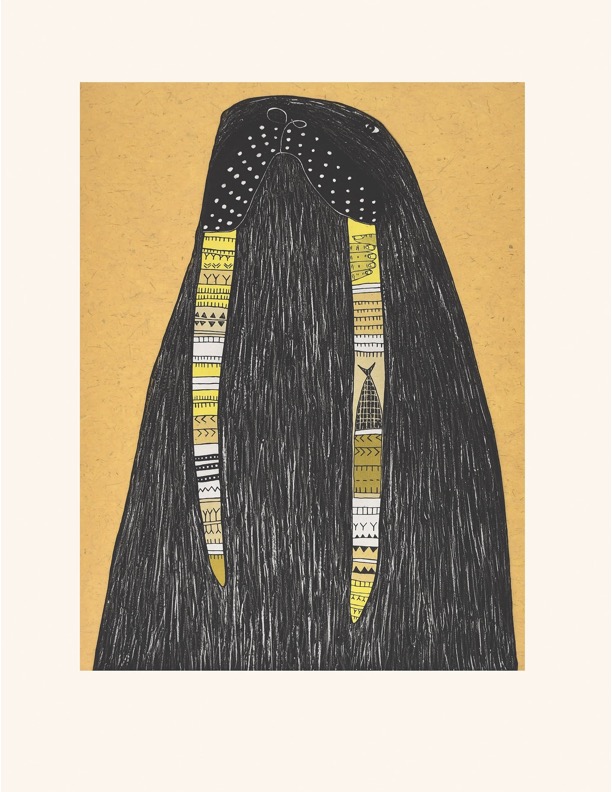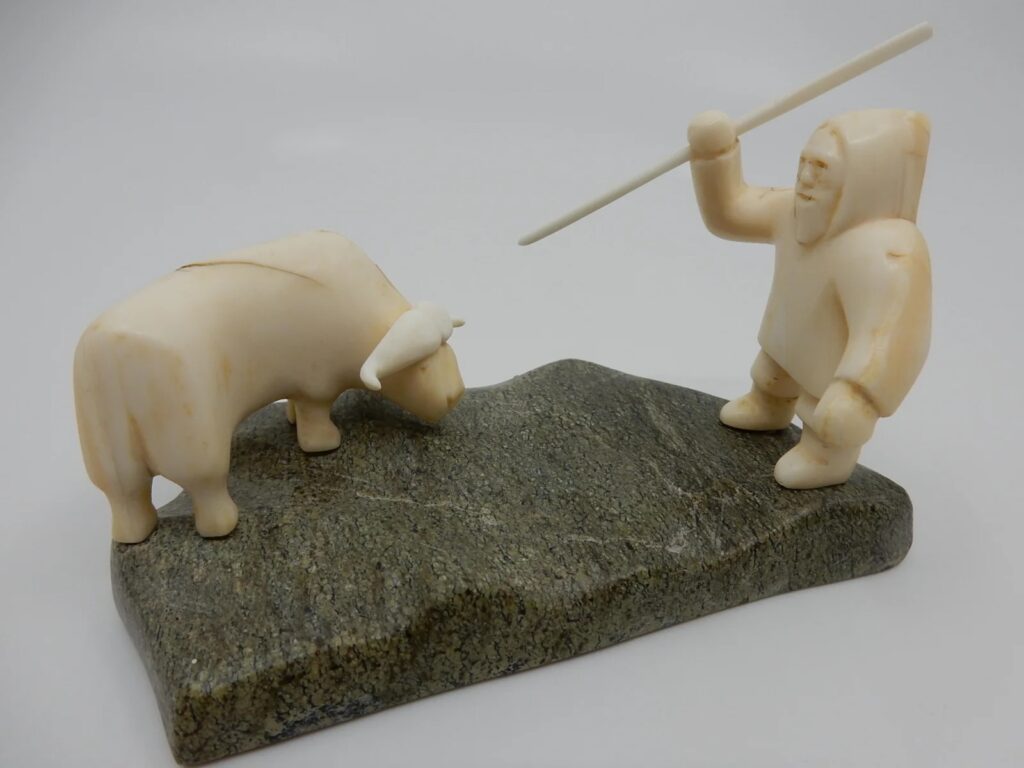Inuit art is a diverse and changing form of cultural expression shaped by different places, times, and influences.
5 different culture phases have been established that describe Inuit art, the Pre-Dorset, Dorset, Thule, Historic and Contemporary.
Inuit art has many forms, carvings in stone, bone, and ivory, functional tools and spiritual objects; and, more recently, printmaking and drawings. Themes of Inuit art reflect the close relationship with the Arctic environment, animals, and spirituality, while modern Inuit artists also explore contemporary life and issues. Printmaking, particularly in Cape Dorset, helped bring Inuit art to wider audiences. Today, Inuit art keeps cultural traditions alive, tells stories, and changes with the times, showing it is active and growing instead of unchanging.

Sarah Joe Qinuajua, Ready to Leave for the Hunt, 1983, stonecut print on paper
In this free inquiry post I plan to explore a little bit about each of these 5 cultural phases and the art that represents them.
Pre-Dorset (c. 2000–500 BCE):
The earliest Inuit ancestors made small tools, carvings, and decorative objects from stone, bone, and ivory. Art from this time was often simple but showed strong ties to hunting, animals, and daily survival.
Dorset (c. 500 BCE–1000 CE):
Dorset people created distinctive carvings and small sculptures, often with spiritual or magical meanings. Masks, amulets, and animal figures were common, showing beliefs in transformation and the spirit world.
Thule (c. 1000–1600 CE):
The Thule were hunters and travelers who used advanced tools like dog sleds and kayaks. Their art included carvings of animals and hunting scenes, but also decorative tools and objects for daily use.
Historic (1600s–1900s):
During contact with Europeans, Inuit art changed as new materials like metal and trade goods became available. Carvings and tools remained important, but outside influence started shaping styles and purposes, especially as Inuit began making art for trade.
Contemporary (1900s–today):
Inuit art grew into a recognized art form worldwide. The rise of printmaking in places like Cape Dorset made Inuit images widely known, while artists continued carving and creating textiles. Modern Inuit art often combines traditional themes with reflections on modern Inuit life and challenges, showing how the art form continues to evolve.

Mythic Wahlrus By Ningiukulu Teevee
To see a slideshow of art from each of these cultural phases click HERE
Ivory Carving
Ivory comes from tusks (like walrus, narwhal, mammoth, mastodon) and is treated differently than bone. It’s often valued for its smoothness and workability.
One Inuit artist, Derrald Taylor (from Yellowknife), uses this method:
The process of preparing and carving ivory involves several careful steps to preserve the material and bring each piece to life. Ivory is sourced locally, often from walrus tusks valued for their solid interiors, and then soaked in oils for one to two years to prevent brittleness. Once ready, the artist begins rough sculpting with saws and power tools, allowing the natural shape of the ivory to guide the design. Detailed carving follows, adding features like faces, textures, and clothing. Afterward, the surface is smoothed and sanded with water and fine sandpaper to achieve a polished finish. Finally, the piece is re-oiled and sealed with polish to protect it and maintain its shine, making sure the artwork remains strong and beautiful over time.
Taylor also emphasizes passing down this knowledge: teaching younger artists and family members not just the tools and steps, but the patience and care needed.

Musk Ox and Hunter, Walrus Ivory and Stone -Mark Tungilik

Sorry, but comments are not enabled on this site.